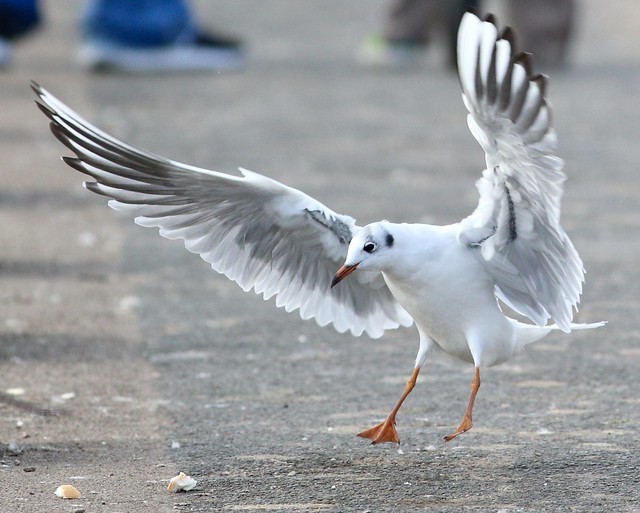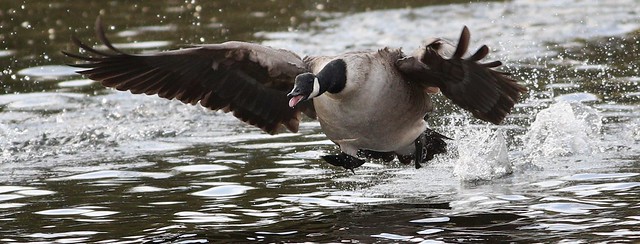Not a lot wrong with these for first time out

Technical side, settings look good, 1/1600 th on the BHG's should be fine, its like any moving object though, faster the ss the higher probability of a sharper shot, rest is down to practise

At first glance, the lens looks good but all the shots are
not sharp and that is, I think, because you would need to
fine tune your AF settings
From the shots above, this is absolutely impossible to tell, very misleading advice!!
Looking at the four BHG's focus looks to have missed the head and is in different areas of the shot, so its either down to the group focus setting or user error

Before you go down the road of AF fine tuning, you need to do some accurate, controlled test shots, on a static object with high contrasting bg, but don't worry about that for now

I'm not a canon user but my advice is this, set the AF tracking to single centre point, group is good in the right situations, larger bird, very contrasting bg.
Set the focus point to show in play back mode, always try focus on the head, that way you can tell at a glace after each shot, whether you hit focus or not.
Don't expect a high hit rate, with BHG's if you can hit 1 in 4 be happy. And don't forget, light conditions and contrasting bg's play a big part in hit rate.
Practise all you can, keep the ss up, even if it means a higher ISO, check the focus point in play back, this is a must as it'll tell you when you miss focus, practise some more


have fun and put some more shots up

 AK0I8364_1 by mark temple, on Flickr
AK0I8364_1 by mark temple, on Flickr AK0I8366_1 by mark temple, on Flickr
AK0I8366_1 by mark temple, on Flickr AK0I8388_1 by mark temple, on Flickr
AK0I8388_1 by mark temple, on Flickr AK0I8369_1 by mark temple, on Flickr
AK0I8369_1 by mark temple, on Flickr AK0I7598_1 by mark temple, on Flickr
AK0I7598_1 by mark temple, on Flickr AK0I8364_1 by mark temple, on Flickr
AK0I8364_1 by mark temple, on Flickr AK0I8366_1 by mark temple, on Flickr
AK0I8366_1 by mark temple, on Flickr AK0I8388_1 by mark temple, on Flickr
AK0I8388_1 by mark temple, on Flickr AK0I8369_1 by mark temple, on Flickr
AK0I8369_1 by mark temple, on Flickr AK0I7598_1 by mark temple, on Flickr
AK0I7598_1 by mark temple, on Flickr

